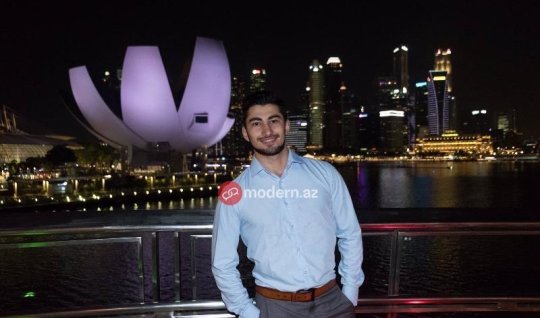“The Four Jewels of the East” - REPORT
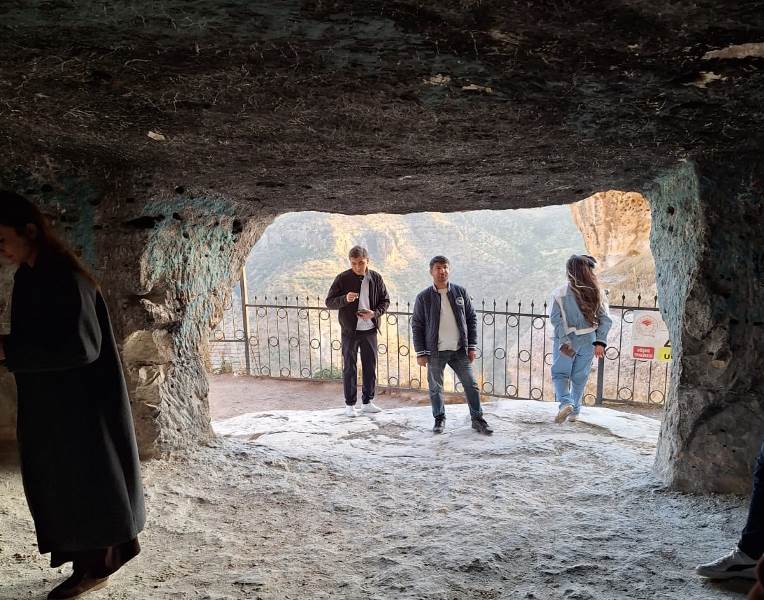
Tourism is not just travel – it is listening to the heart of a region, telling its story.
Tourism is about traveling to another country, getting acquainted with the history, culture, nature, cuisine, and people of the country you visit. This means that tourism is not just a trip; it is listening to the heart of the region you visit and telling its story to others. And we, humans, write stories. Some write the story of their life's page, some write history that will remain for future generations, and some write the story of what they have seen and experienced… Stories are also history and are meant to be written. They are written to remain in memories and in history.
One of the Centers of World Tourism - Turkey
Turkish tourism is famous worldwide. Today, it is no secret that Turkey has become a center of world tourism.
Regardless of the season, if you visit any region of the brotherly country, you will undoubtedly encounter a new natural wonder. It is as if God has bestowed Turkey upon Earth as a paradise. Several historical sites in the country have been included in UNESCO's Main List of World Heritage.
The brotherly country attracts attention with beautiful places like Antalya, Dalaman, Uludağ, Rize, Konya, Mardin, Pamukkale, Cappadocia, Ephesus, Bergama, Diyarbakır, Sinop, Aphrodisias, and wonders such as “Kız Kulesi” (Maiden's Tower) (Istanbul), Mardin Evleri (Mardin Houses) (Mardin), Tekirova (Antalya), Fethiye (Muğla), Salda Lake (Burdur), Mount Nemrut (Adıyaman), Göbeklitepe (Şanlıurfa), Batman (Hasankeyf-ancient village). Indeed, the ancestors were right: “Seeing once is better than hearing a hundred times.”
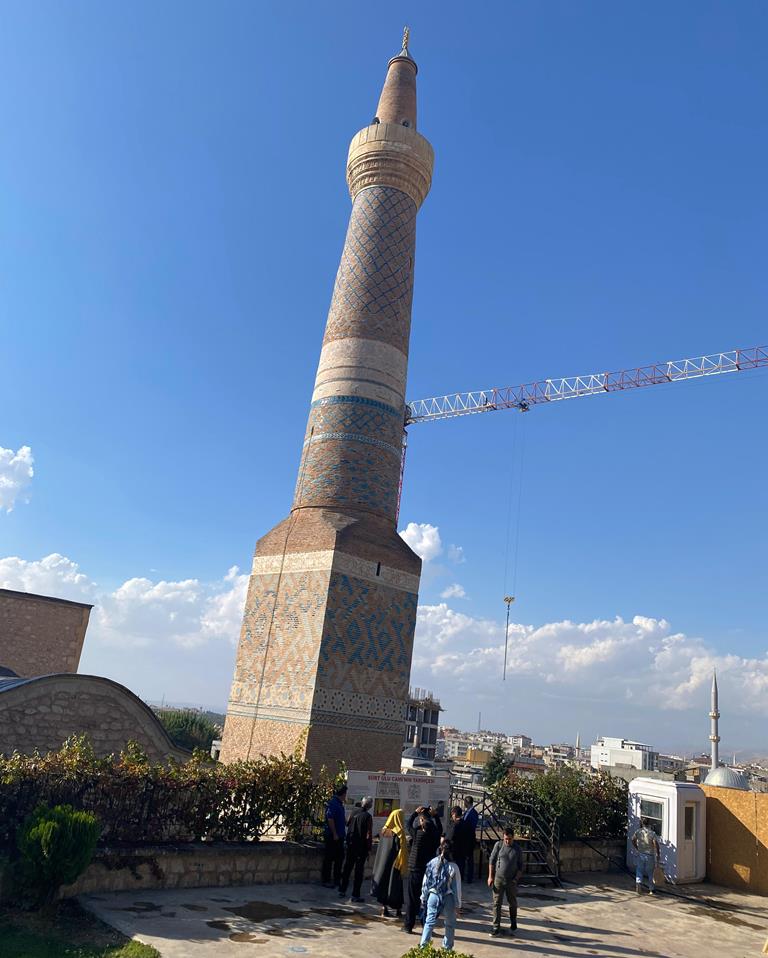
4 Jewels of Eastern Anatolia, Noteworthy for Their History and Culture
The Bitlis, Siirt, Muş, and Batman regions of Eastern Anatolia captivate with their charm and uniqueness, while also drawing attention with their history and culture. Mother Nature has not deprived these places of beauty. This region, which exhibits a certain distinctiveness in its customs, way of life, and nature, has endured the trials of history and reached our present day.
During our trip to the brotherly country, organized at the invitation of the Turkish Ministry of Culture and Tourism and by the Tourism Promotion and Development Agency (TGA) operating under the ministry, we had the opportunity to get more closely acquainted with the beauties of Muş, Bitlis, Batman, and Siirt.
Muş - The First Place Turks Set Foot in Anatolia During the Seljuk Period
The Muş region is distinguished by its ancient historical monuments, museums, and agriculture. The main attractions in this region, categorized as “hidden gems,” include the Muş Museum, Ulu Cami Mosque, Yıldızlı Han Caravanserai, Historical Murat Bridge, other historical sites, and natural landscapes.
The city of Muş, located in the Eastern Anatolia region of the country, uniting 6 districts and home to approximately 413,000 inhabitants, boasts a rich history. It is even said that Muş was one of the first areas where Turks set foot in Anatolia during the Seljuk period. A statue of Arp Aslan stands in the city center. The population is engaged in animal husbandry and agriculture. The province is also known for its giant sugar factory.
Muş's Historical-Cultural Mosque - Ulu Cami
Ulu Cami was the first place we visited in the city. According to legend, Turks historically built mosques in all the cities they conquered, naming the largest of these mosques Ulu Cami.
Muş also features the Hacı Şeref Mosque, dating back to 17th-century architecture, and the Alaaddin Mosque, built in the 18th century.
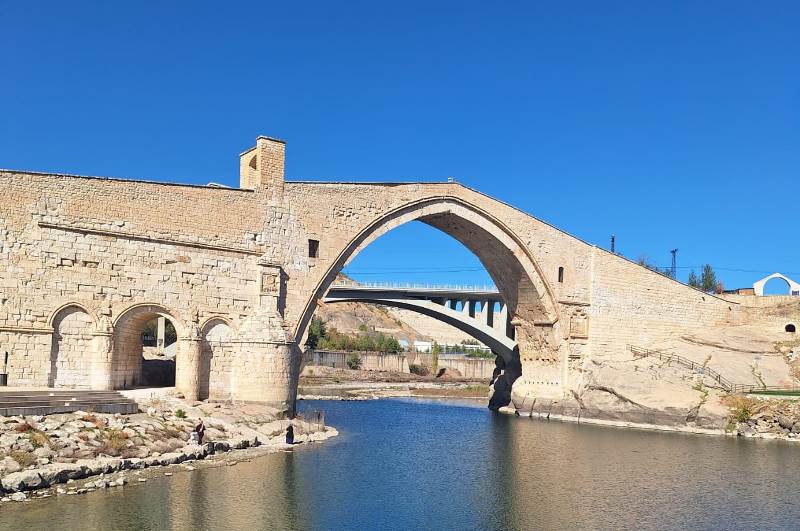
Historical Murat Bridge
The Historical Murat Bridge is located on the Murat River in Muş province, 12 km south of Muş city center. There is no precise information about the initial construction date of the Historical Murat Bridge, which was built during the Seljuk period in the 13th century. An inscription dated 1871 found on a marble slab on the bridge indicates that it was restored during the Ottoman period.
Serdar Solmaz, a tourism employee of Muş City Municipality in Turkey, shared his thoughts on the Murat Bridge with us. According to him, the Murat River begins its flow from Van, proceeds to Muş, then heads towards Erzurum, and subsequently merges with the Euphrates River, flowing into Mesopotamia.
"The bridge, which is 143 meters long, is 5 meters wide. The Murat Bridge is still actively used today. It is our duty to uphold our values and protect the historical monuments inherited from our ancestors," Serdar Solmaz stated.
Paradise Bitlis - Enchanting Nature, Mysterious History
Since ancient times, every foreigner visiting Turkey has written such pleasant words about this region that these ideas still retain their relevance today. Bitlis is one of those paradisiacal regions, where every stone tells a story, making Turkey beloved by the grandchildren and great-grandchildren of those travelers, just as it was yesterday.
Our group headed to Bitlis after Muş. Along the way, we were inspired by the natural beauties and valleys of Eastern Anatolia as we reached our destination. Bitlis attracts attention not only with its natural and historical beauties but also with its still undiscovered places.
Bitlis is the provincial capital. There are three districts attached to the central district. Located in the Eastern Anatolia region, Bitlis is surrounded by Siirt to the south, Muş to the west, Mount Ağrı to the north, and Lake Van to the east.
Bitlis is an important place with its castles and Islamic monuments. According to official figures, over 70,000 people now live in this city of ancient civilization.
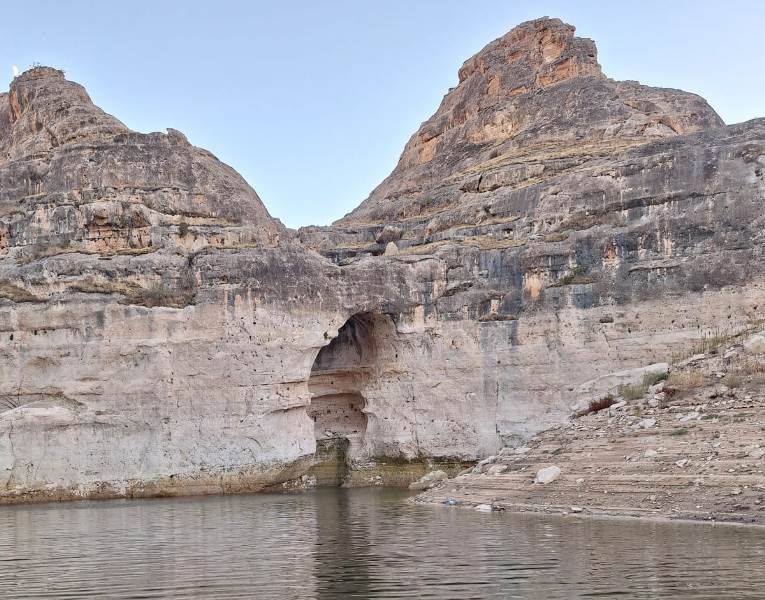
Bitlis Castle, Which Alexander the Great Could Not Conquer
The story of this castle, one of the city's most famous historical monuments, is quite interesting. According to the story, as Alexander the Great was preparing to embark on a campaign in Bitlis with his army, he asked his commander Bedlis to build a castle that even he himself could not conquer.
After great efforts, Bedlis completed a castle on a rock block that was very difficult to conquer. As soon as Alexander the Great returned from his campaign, he made great efforts to conquer the castle, but he could not achieve his goal and left the castle to Commander Bedlis…
Bitlis Castle, which Alexander the Great could not take, stands today in all its grandeur, awaiting its visitors.
In Bitlis, castles, madrasahs, bridges, and caravanserais are the most concrete examples of a thousand-year-old historical heritage. This city, whose natural beauties are as captivating as its history, fascinates people. Bitlis, one of the oldest cities in Eastern Anatolia, awaits you with an enchanting atmosphere of history and nature.
Bitlis also boasts a very rich culinary culture. There are many dishes that will leave a lasting taste in your palate, such as Büryan kebab, Çorti aş, and İçli köfte. Although it might be a somewhat heavy cuisine for those unfamiliar with it, you are guaranteed to discover unique flavors in Bitlis.
Seljuk Cemetery
The Seljuk Cemetery, known as the world's largest Turkic-Islamic cemetery, is also located in Bitlis. Situated in the city of Ahlat, one of the strategically important Islamic cities of its time, such as Rey, Isfahan, Khwarezm, and Khiva, the cemetery is like an open-air museum where our ancestors rest. Here, it is possible to find traces of many civilizations, starting from the Urartians. 9,000 tombstones have been discovered in the Seljuk cemetery. The astonishing reliefs and decorations on the stones attract the attention of tourists.
The Battle of Manzikert, which took place in 1071 between the Byzantine Empire and the Seljuk Empire, also occurred right here.

Tatvan - Bitlis Region
We left the open-air museum, or rather the Seljuk cemetery, with strange impressions. Whatever we do, our history is always with us, and we cannot escape it.
Under the influence of history and historicity, we are heading towards Tatvan, one of the beautiful places in Bitlis.
Tatvan is a large town and port on the southern shore of Lake Van. It serves as a base for transportation across the lake and access to the Nemrut volcano region.
Its main attractions are Tatvan beach, lake ferries, Nemrut volcano, and the route to Ahlat.
It is possible to reach Tatvan by train or bus. There are also ferry connections to the lake.
Tatvan, one of the most important tourist destinations in the region, has many sights to see. One of them is Nemrut Crater Lake. This lake, itself a natural wonder, is Turkey's largest and the world's second-largest crater lake. Tatvan can also welcome its guests in winter with the Nemrut Ski Center. During your Tatvan trip, where every moment will be most fulfilling, it is possible to experience unforgettable moments by greeting the sunrise and bidding farewell to the sunset with the view of Lake Van, and to engrave these memories into your mind.
As a wise person said, "On your deathbed, you will regret two things: having loved too little and having traveled too little."
Siirt - A Hidden City on the Edge of Mesopotamia
After Tatvan, our journey took us to the Siirt region.
This region is located in Turkey's Southeastern Anatolia, on the edge of Mesopotamia, the cradle of civilizations. Siirt, its central city, soothes the soul with its mystery. The city resembles a living museum not only due to its geographical location but also because of its millennia-old history and rich cultural heritage. Unfortunately, the secrets of Siirt, which preserves its historicity, have not yet been fully unveiled. Let us open this treasure chest together and discover the unknown treasures of Siirt awaiting exploration.
Siirt is a very interesting place in terms of nature and regional culture. The Botan River and surrounding nature parks are known for adventure tourism.
Its main attractions are Botan National Park, local museums, and markets.
The first place we visited in the center of Siirt was a sacred site. The tomb of İsmail Fehrullah and İbrahimhakkı is a pilgrimage site frequently visited by local residents and those coming from surrounding towns and villages.
Ehsan Gül, a lecturer at Siirt University, spoke about the history of the tomb, stating that its foundation was laid by a teacher and his student.
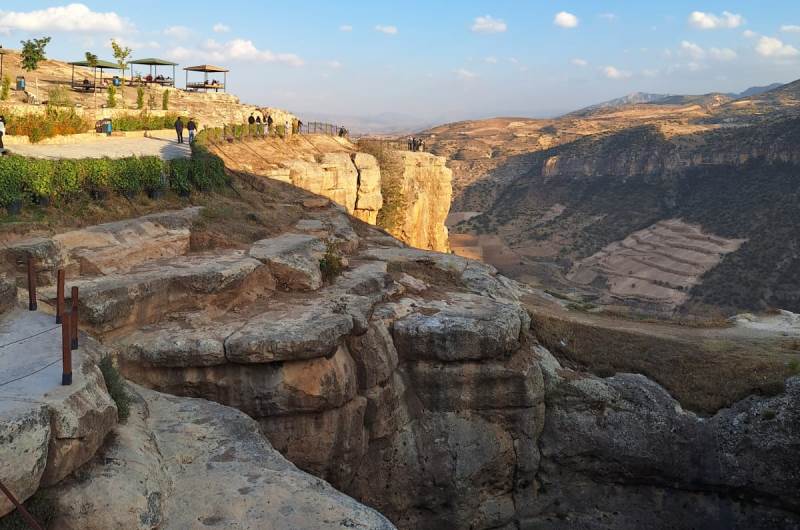
Traces of History or Silent Witnesses of the Past
Siirt's history dates back to the Neolithic period. Hosting various civilizations has transformed the city into a true historical laboratory. So, where can one see the traces of this rich history?
Siirt attracts attention with its historical bridges, castles, tumuli, religious monuments that defy time, and its beautiful and mysterious nature.
Siirt is famous for its historical bridges connecting the two banks of the Tigris River. The Malabadi Bridge, in particular, holds the title of the world's largest stone arch bridge. It is not only an engineering marvel but also holds an important place in the socio-cultural life of the region. Another important bridge is the Botan Bridge. These bridges not only facilitated transportation but also eased the interaction of various cultures.
Castles and tumuli, silent witnesses of the past, are very characteristic of this region. Important archaeological sites such as Rasıl Hacar Tumulus, Kayıktepe Tumulus, and Başur Tumulus shed light on the prehistoric periods of the region. Excavations carried out in these tumuli provide valuable information about the lifestyle, beliefs, and technological advancements of the civilizations that settled in the region. Castles, on the other hand, are important structures built in the past to protect the region and still stand today. Eruh Castle and Şirvan Castle demonstrate the strategic importance of the region.
Siirt has always been a city where various religions coexisted. This is reflected in the diversity of religious structures within the city. The Ulu Mosque is one of Siirt's most important historical buildings. Bearing traces of Seljuk architecture, the mosque has been open for worship for centuries.
Siirt Ulu Cami was restored in 2012. It has 1 minaret, 3 large domes, and 5 mihrabs. The mosque contains architectural masterpieces from the Seljuk period.
Furthermore, important religious sites such as the tomb of İbrahim Hakkı Hazretleri and the tomb of Veysel Karani significantly contribute to Siirt's spiritual atmosphere. These structures are not only religious sites but also important components of cultural heritage.
Tigris River
The Tigris River is the lifeblood of Siirt. The river breathes life into the region and contributes to its natural beauty. Walking along the banks of the Tigris River, picnicking, and fishing are among the activities enjoyed by Siirt residents and tourists.
Botan Valley - Hidden Paradise
Siirt is a captivating city not only with its historical and cultural heritage but also with its natural beauty. The Tigris River, Botan Valley, and mountains are important components of Siirt's natural beauty.
Botan Valley is one of Siirt's most significant natural wonders. With its lush vegetation, waterfalls, and natural rock formations, the valley offers a captivating landscape. It is an ideal place for nature walks, camping, and photography.
Mehmet İsan Mamiş, Head of the Tourism Department of Siirt Municipality, who welcomed our group with great respect, stated that the most suitable time to discover Siirt is spring and autumn. According to him, temperatures are milder and nature is more vibrant during these months.
For adventure seekers, Siirt's mountains are suitable. Trekking, mountaineering, and paragliding in the mountains are among the activities available in Siirt. You can reach Siirt by air and road. There are direct flights to Siirt Airport. You can also come to Siirt by bus. Siirt offers a wide range of hotels and guesthouses for accommodation. You can find accommodation suitable for various budgets in the city center and tourist areas.
Malabadi Bridge - The Bridge with the Widest Arch Among Stone Bridges in the Middle East
To be honest, after Botan Valley, what attracted my attention most in this region was the Malabadi Bridge, located in Batman province, which is ancient and once held strategic importance. Situated on the Silk Road, the Malabadi Bridge was built in 1147 during the Artuqid Beylik period by Timurtaş Bin-i İlqazi. It is a bridge 7 meters wide and 150 meters long. Its height from the water level to the foundation stone is 19 meters. It was built with colorful stones and has reached our day through repairs. The bridge was restored by Silvan Municipality in 1989.
The Malabadi Bridge is the bridge with the widest arch among stone bridges in Turkey and the Middle East. The bridge is within the borders of Diyarbakır city. On both sides of the arch, there are two rooms used as shelters for caravans and passengers, especially during harsh winter days. It is said that these rooms, also used by bridge guards, were previously connected to corridors and the bottom of the road, and from these corridors, the footsteps of approaching caravans could be heard from further away.
Evliya Çelebi and Albert Gabriel stated that the dome of Hagia Sophia could easily fit under the Malabadi Bridge to express its grandeur.
In brotherly Turkey, as in Azerbaijan, multicultural values are prioritized. Just as there are mosques in the country, there are also monasteries that bear the traces of history, and these have been restored to a high standard by the state. One such monastery is Mor Kiryakus Monastery, located in Ayrançı village of Beşirli district in the Batman region. The monastery, believed to have been built in the 5th century, was thoroughly restored in 2023.
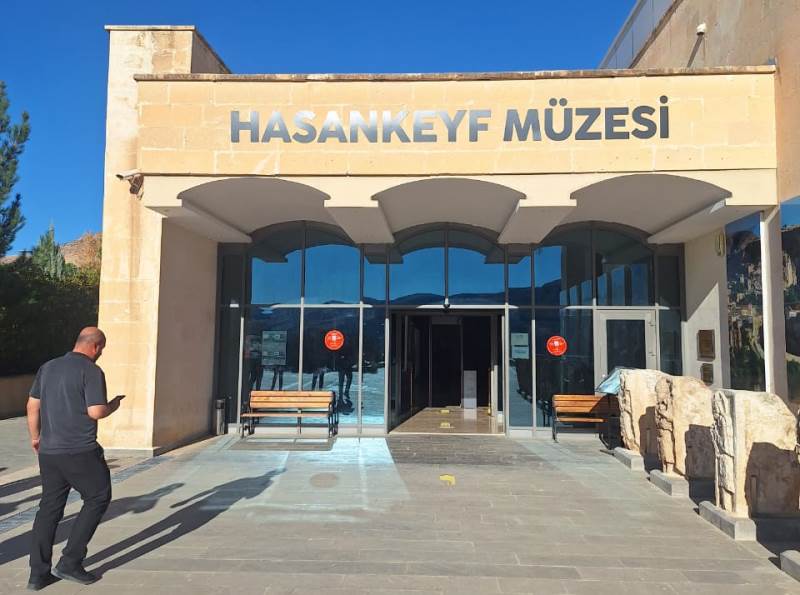
Hasankeyf Museum
Our last stop in Eastern Anatolia was the Hasankeyf Archaeological Museum.
It is under the Ministry of Culture and Tourism and is the only museum in the city.
The construction of the museum began in 2010 and it was opened to visitors in 2015. The museum's collection consists of findings from the Paleolithic and Neolithic periods and artifacts excavated from the Ilısu and Hasankeyf regions. Approximately 500 artifacts are displayed in three large exhibition halls.
After the Ilısu Dam was put into operation, a total of 7 rescue excavations were carried out in the regions submerged by floods in 2020, and the confiscated items were taken under the protection of the museum management. The most important historical artifacts discovered during these excavations are game pieces and bronze grave goods, obelisk fragments found in Gusir Höyük, and the figure of "God Bes" found in Hasankeyf.
The museum also contains approximately 300 well-preserved amorphous bronze artifacts, and many painted and unpainted pottery items, including several examples from the Nineveh culture.
The museum features a projection room where documentary films about excavations in the Batman and Siirt regions are shown, a library, and a laboratory where exhibits are restored.
The Zeynal Bey Tomb, located in Hasankeyf, is the only historical artifact inherited by us from the Aq Qoyunlu.
"The growing strength of the Turkic world is gratifying"
The role and importance of guides in our lives are immense. This is because they provide direction for a person to take the right path. The right direction does not lead one astray, and you can easily find answers to the questions “why, for what reason.”
We thank our guides who provided us with the right direction on different paths and in different places throughout our journey.
Mustafa Yalçınkaya, an employee of the Turkish Ministry of Culture and Tourism and a professional guide who stated he has been involved in tourism for over 20 years, shared his thoughts on his experience and profession with us:
"Working with different people requires communication, attention, and professionalism; you must be knowledgeable enough to answer tourists' questions. I strive to excel at my job, and I succeed. I speak English and Russian fluently, as this is essential in our work."
Expressing his satisfaction with the growing strength of the Turkic world, which possesses ancient history and culture, M. Yalçınkaya also stated that the fame of Turkish tourism has spread beyond the world. According to him, based on international statistics, Turkish tourism ranks 5th globally. Our guide explained the reason for the tourist influx by the existence of stable and safe conditions in his country.
Mustafa Yalçınkaya, stating that the Eastern Anatolia region is distinguished by its uniqueness, beautiful nature, mountains, and historicity, highlighted the region's special character with the Euphrates and Tigris rivers.
Our guide, who is very attached to our country, its people, and its history, says:
"Independent Azerbaijan is confidently advancing on a new path of development after the Karabakh Victory. The Turkey-Azerbaijan friendship is an example, and there is no equal to this brotherhood.
I will definitely go to Azerbaijan soon and visit Karabakh as well."
Our other guide, Serdar Solmaz, a tourism employee of Muş City Municipality, says he loves his job very much and has been involved in tourism for 8 years. Our guide from Batman said he loves his country and its history very much.
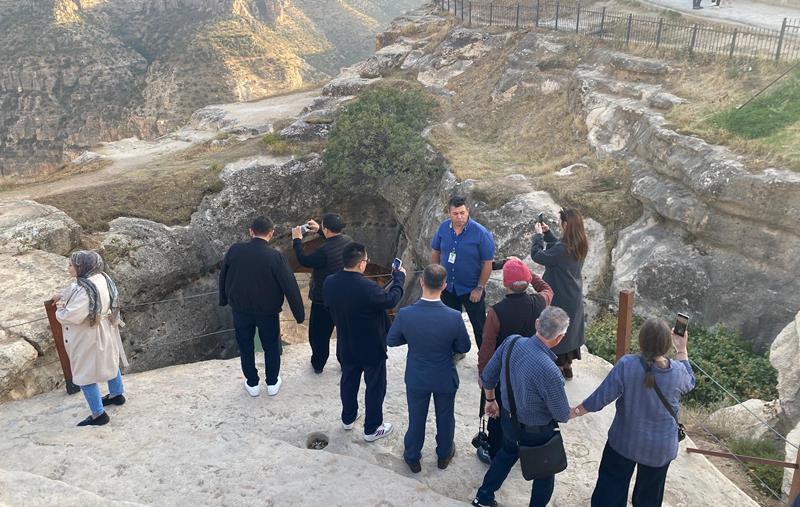
Eastern Anatolia Does Not Live Solely by the Traces of the Past
During our trip, the sincerity in the hearts of the Anatolian people, the light in their eyes, and their hospitality captivated us. Such a warm attitude awakens the desire to visit these places again...
Our journey concludes here. Our group departs from Turkey's Eastern Anatolia region with pleasant impressions. It would be a sin to come to Hasankeyf and not take a boat tour. Naturally, you experience beautiful feelings and encounter interesting facts; these should not be missed.
Worth Coming to See
This trip showed us that Eastern Anatolia does not live solely by the traces of the past.
Here, the silence of the lake, the breath of the mountain, and the smile of the village people are all an invitation to the future. The greatest tourism asset is this very sincerity… The sincerity reflected in the embrace of the mountains, in the calm waters of the lakes, and living in the eyes of the Anatolian people.
In the mountains of Tatvan, on its steep roads, in the plains and simplicity of Muş, in the valleys of Siirt, in the authenticity of Batman, we found a story... In these places, one finds oneself and the flow of time.
On this trip, we saw that the lands of Turkey have yet to speak many words.
Every stone holds a history, every breath a hope. And the trace of the past, the hope for the future, gives people hope to live and create.
P.S. They say there are no coincidences. Emin Ramanlı, the head of a Batman tourism company, says his ancestors were from Ramana settlement in Baku. Interesting.
-
00:52, Bu günA European country is considering NATO membership
-
00:40, Bu günProgress was achieved on numerous issues - ZELENSKİ
-
00:10, Bu günThe West is trying to break up the Caspian Five - LAVROV
-
15 December 2025, 23:23A factory exploded in Iran - 9 people died
-
15 December 2025, 22:50Unique operation from Ukraine - Russia's submarine was destroyed
-
15 December 2025, 22:16An unknown drone approached Turkey - Fighters shot it down in the air - URGENT
-
15 December 2025, 19:51Trump's threat yielded no results - fighting continues
-
15 December 2025, 19:39Ukraine struck Astrakhan this time
-
15 December 2025, 19:28Terrorism prevented in Los Angeles
-
15 December 2025, 17:33Issued to date AMNESTIES
-
15 December 2025, 16:47Erdoğan's son's call for support for his father
-
15 December 2025, 16:38Trump reopens US embassy in Belarus
-
15 December 2025, 14:36Is a strong earthquake expected in Azerbaijan? - Official STATEMENT
-
15 December 2025, 14:13Mercenary Azerbaijanis joining the Russian army - What punishments await them...
-
15 December 2025, 13:50State advisor who worked with four presidents WHO IS IT... - PHOTO
-
15 December 2025, 12:56The Church has turned into a political party - this is unacceptable - Pashinyan
-
15 December 2025, 12:54What did Lukashenka gift to Trump's family?
-
15 December 2025, 12:09Armenia has requested help from Europe
-
15 December 2025, 12:05The countries that invested the most in Azerbaijan this year
-
15 December 2025, 11:41What are Bashar al-Assad and his family doing in Moscow?
-
15 December 2025, 11:05This year, too, there was no saffron in Azerbaijan... - INTERVIEW
-
15 December 2025, 09:34Flood in Morocco - 14 people died
-
15 December 2025, 09:30In the Russia-Ukraine war, an Azerbaijani has also died
-
15 December 2025, 08:24The perpetrators of the terror that killed 16 people were reportedly father and son
-
15 December 2025, 08:15Israel killed a Hamas commander - CONFIRMED
-
15 December 2025, 00:11The death toll in the Sydney terror attack reached 15
-
14 December 2025, 23:58USA will strike ISIS
-
14 December 2025, 23:46Mirzoyan is going to Brussels
-
14 December 2025, 23:29No winner was determined in the “Trabzonspor” - “Beşiktaş” match
-
14 December 2025, 23:27The individual who killed Americans in Syria WHO IS IT...





































